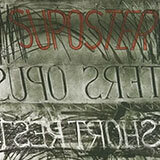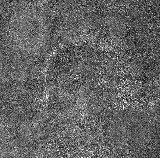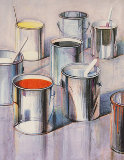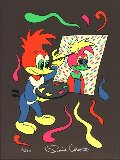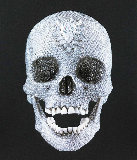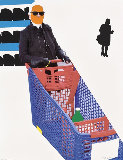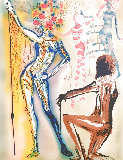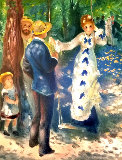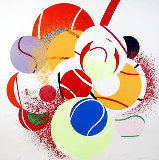





Gold Trash Can 1977
James Rosenquist
Limited Edition Print : Etching and Gold Leaf
Size : 21x14 in | 53x36 cm
Edition : From the edition of 39
-
🔥Fabulous Etching - a Steal a Blue Chip - Inquire - 5 Watchers $$$$$$$
Year1977
Hand SignedSigned lower right
Condition Excellent
Not Framed
Purchased fromPrivate Collector
Provenance / HistoryJames Rosenquist created this series of gold trash cans after learning of some deaccessions the Metropolitan Museum in New York made from their permanent collection in order to purchase an ancient Greek vase by Euphronios, called the Calyx Krater, for one million dollars. Rosenquist's message on the absurdity of the action was heightened when the vase was returned to the Italian government in 2008 after it was discovered that it had been looted from a necropolis near Rome."The ridiculousness of the idea of selling a Modigliani and a Soutine weighed on my mind, and while I was brooding about it, my friend Ronnie Westerfield took some peyote and had a dream about Greek drawings on a garbage can. I thought, I know what I'm going to do, I'm going to make miniature Calyx Kraters as garbage cans and make them out of solid gold."James Rosenquist, Painting Below Zero: Notes on a Life in Art, New York, 2009 (p. 245-246) jGold trash can sculptures sold for $19k at auction Christies 2011
Story / Additional InfoSheet size 29.5 x 20.9 Van Straaten Gallery, Chicago, IL.
Certificate of AuthenticityVan Straaten Gallery, Chicago, IL
LID46142
James Rosenquist - United States
Art Brokerage: James Rosenquist American Artist: b. 1933-2017. James Rosenquist was an American Pop artist known for his monumental paintings and prints. Often appropriating commercial imagery, his montage-like works combined popular culture, Surrealism, and historical painting methods. "Much of the aesthetic of my work comes from doing commercial art," the artist once said. "I painted pieces of bread, Arrow shirts, movie stars. It was very interesting. Before I came to New York I wanted to paint the Sistine Chapel. I thought this is where the school of mural painting exists." In his politically charged multi-panel painting F-111 (1964–1965), the artist offered a visual critique of the Vietnam War, with a medley of mushroom clouds, advertising, and populist imagery. Born on November 29, 1933 in Grand Forks, ND, Rosenquist went on to attend the University of Minnesota, before studying at the Art Students League in New York under George Grosz, Morris Kantor, and Edwin Dickinson. The artist's early career as a commercial sign painter ended in 1960, after witnessing two coworkers fall to their deaths from a scaffold. Focused on his career, Rosenquist moved to a studio in Lower Manhattan, where he met other artists such as Ellsworth Kelly, Robert Indiana, Jasper Johns, Robert Rauschenberg, and Jack Youngerman. Transitioning away from cultural references into more abstract subject matter, he lived and worked between Aripeka, FL and New York, NY. Rosenquist died on March 31, 2017 in New York, NY. His works are held in the collections of the Art Institute of Chicago, The Museum of Modern Art in New York, the National Gallery of Art in Washington, D.C., and the Tate Gallery in London. Listings wanted.






















